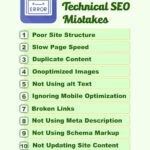In search engine optimization (SEO), long-tail keywords have emerged as a powerful tool for driving targeted traffic to websites. While short-tail keywords may have high search volumes, long-tail keywords offer specificity and relevance that can lead to higher conversion rates and lower competition. In this comprehensive guide, we’ll dive deep into the world of long-tail keyword optimization, exploring its importance, strategies for research and implementation, and best practices for maximizing its effectiveness.
1) What are Long-Tail Keywords?
In the vast landscape of search engine optimization (SEO), long-tail keywords play a crucial role in helping businesses reach their target audience and achieve their marketing objectives. To truly harness the power of long-tail keywords, it’s essential to have a deep understanding of what they are and how they differ from their short-tail counterparts.
1.1 Definition and Characteristics
Long-tail keywords are specific, highly targeted search queries that typically consist of three or more words. Unlike short-tail keywords, which are broad and general, long-tail keywords are more detailed and descriptive, often reflecting a user’s specific intent or query. For example, while a short-tail keyword like “digital marketing” may have high search volume, a long-tail keyword like “best digital marketing strategies for startups” is more precise and targeted.
Long-tail keywords exhibit several key characteristics that set them apart:
- Specificity: Long-tail keywords address niche topics or specific user queries, making them highly relevant to searchers’ needs.
- Lower Search Volume: Long-tail keywords typically have lower search volumes compared to short-tail keywords. However, they often have higher conversion rates due to their increased relevance.
- Reduced Competition: Because long-tail keywords are more specific, they face less competition from other websites, making it easier for businesses to rank for them in search engine results pages (SERPs).
- Higher Intent: Long-tail keywords often indicate strong user intent, with searchers closer to making a purchasing decision or seeking specific information.
Understanding these characteristics is crucial for businesses looking to leverage long-tail keywords effectively in their SEO strategy. By targeting long-tail keywords that align closely with their products, services, or content offerings, businesses can attract highly relevant traffic and improve their chances of conversion.
1.2 Importance in SEO
Long-tail keywords play a vital role in the broader SEO landscape, offering several key benefits for businesses:
- Enhanced Relevance: By targeting long-tail keywords that closely match their offerings, businesses can attract highly relevant traffic, resulting in better engagement and conversion rates.
- Lower Competition: Long-tail keywords face less competition from other websites, making it easier for businesses to rank for them in SERPs and gain visibility among their target audience.
- Improved Conversion Rates: Long-tail keywords often indicate strong user intent, with searchers more likely to convert into customers or leads when their needs align closely with the content or offerings provided.
- Long-Term Sustainability: Long-tail keywords can provide a steady stream of targeted traffic over time, contributing to the long-term success and sustainability of a business’s SEO efforts.
2) Researching Long-Tail Keywords
Effective keyword research is the cornerstone of any successful SEO strategy, and when it comes to long-tail keywords, a thorough understanding of user intent and search behavior is paramount. In this section, we’ll delve into various techniques and tools for researching long-tail keywords, as well as the importance of analyzing user intent to create targeted and valuable content.
2.1 Keyword Research Techniques
To uncover valuable long-tail keyword opportunities, marketers and SEO professionals can leverage a range of tools and methods. Here’s an overview of some popular techniques:
Google Keyword Planner: Google’s Keyword Planner remains a go-to tool for keyword research, allowing users to explore keyword ideas, estimate search volumes, and analyze keyword trends. By entering seed keywords related to their niche or industry, marketers can discover long-tail variations with significant search volume and relatively low competition.
SEMrush: SEMrush is another powerful keyword research tool that provides comprehensive insights into keyword performance, competition, and trends. With features like Keyword Magic Tool and Keyword Difficulty, users can identify long-tail keywords that align with their business objectives and SEO goals. Additionally, SEMrush offers valuable data on competitors’ keyword strategies, allowing marketers to uncover untapped opportunities.
Answer the Public: Answer the Public is a unique keyword research tool that generates insights based on real user questions and search queries. By entering a seed keyword or topic, users can discover long-tail keywords in the form of questions, prepositions, and comparisons, providing valuable insight into user intent and interests.
In addition to these tools, marketers can also conduct manual keyword research by exploring related search suggestions on Google, analyzing competitor websites, and monitoring industry forums and social media discussions.
2.2 User Intent Analysis
Understanding the underlying intent behind long-tail keywords is essential for creating content that resonates with target audiences. User intent can generally be categorized into informational, navigational, transactional, and commercial investigation.
Informational Intent: Users seek information or answers to specific questions. Content targeting informational intent should provide comprehensive answers, explanations, or guides related to the long-tail keyword.
Navigational Intent: Users are looking for a specific website or online resource. Content optimized for navigational intent should include clear navigation paths and links to relevant pages or resources.
Transactional Intent: Users intend to complete a specific action, such as making a purchase or signing up for a service. Content optimized for transactional intent should focus on product descriptions, pricing information, and calls-to-action.
Commercial Investigation Intent: Users are in the research phase and are comparing different products, services, or solutions. Content targeting commercial investigation intent should provide in-depth comparisons, reviews, and evaluations to help users make informed decisions.
By aligning content with user intent and addressing the specific needs and preferences of target audiences, businesses can create highly relevant and engaging content that attracts organic traffic and drives conversions.
3) Creating Content Around Long-Tail Keywords
Creating high-quality content that effectively incorporates long-tail keywords is crucial for driving organic traffic and engaging target audiences. In this section, we’ll explore strategies for content ideation and optimization to maximize the impact of long-tail keyword-focused content.
3.1 Content Ideation:
Content ideation is the process of generating ideas for topics and themes that align with long-tail keywords and address the needs and interests of target audiences. Here are some effective strategies for content ideation:
Brainstorming: Start by brainstorming a list of potential topics and themes based on relevant long-tail keywords related to your niche or industry. Encourage team collaboration and creativity to generate a diverse range of ideas that appeal to your target audience.
Competitor Analysis: Conduct a thorough analysis of competitor websites and content to identify gaps, opportunities, and trends. Analyze the types of content that are performing well for competitors and explore similar topics or angles that you can incorporate into your own content strategy.
Content Gap Analysis: Use tools like SEMrush, Ahrefs, or BuzzSumo to perform content gap analysis and identify topics or keywords that your competitors are ranking for but you are not. Look for opportunities to create content around these topics to fill gaps in your existing content strategy and attract organic traffic.
Keyword Research: Utilize keyword research tools to identify long-tail keywords with high search volume and relatively low competition. Look for keywords that align with your business objectives and target audience interests, and use them as inspiration for content ideation.
By combining these strategies, businesses can generate a diverse range of ideas for long-tail keyword-focused content that resonates with their target audience and drives organic traffic to their website.
3.2 Content Optimization:
Once you’ve identified topics and themes for your long-tail keyword-focused content, it’s essential to optimize on-page elements to effectively incorporate these keywords and improve search engine visibility. Here are some tips for content optimization:
Title Optimization: Craft compelling and keyword-rich titles that accurately reflect the content of your page and entice users to click. Include long-tail keywords naturally within your title to improve relevance and visibility in search results.
Heading Optimization: Use descriptive and keyword-rich headings (H1, H2, H3, etc.) to structure your content and highlight key points. Incorporate long-tail keywords into your headings to improve readability and SEO.
Meta Description Optimization: Write concise and compelling meta descriptions that summarize the content of your page and encourage users to click. Include relevant long-tail keywords to improve search engine visibility and attract organic traffic.
Body Content Optimization: Incorporate long-tail keywords naturally and strategically throughout your body content, ensuring that they flow seamlessly within the context of your writing. Avoid keyword stuffing and prioritize creating valuable and engaging content that meets the needs of your audience.
By optimizing on-page elements such as titles, headings, meta descriptions, and body content, businesses can effectively incorporate long-tail keywords into their content and improve search engine visibility, driving organic traffic and engagement with their target audience.
4) Implementing Long-Tail Keywords Across Channels
Implementing long-tail keywords across various channels is essential for maximizing their impact and reaching your target audience effectively. In this section, we’ll explore best practices for integrating long-tail keywords into both on-page and off-page SEO strategies.
4.1 On-Page SEO:
On-page SEO refers to the optimization of individual web pages to improve search engine rankings and drive organic traffic. Here are some best practices for integrating long-tail keywords into on-page content:
Website Pages: Incorporate long-tail keywords naturally into website pages, including the homepage, About Us page, and service or product pages. Ensure that keywords are relevant to the content and context of each page to improve search engine visibility.
Blog Posts: Create blog posts centered around long-tail keywords that address common questions, pain points, or interests of your target audience. Use keywords in the title, headings, meta description, and throughout the body content to enhance relevance and improve SEO.
Product Descriptions: Optimize product descriptions with long-tail keywords that accurately describe the features, benefits, and use cases of your products. Use descriptive language and incorporate keywords naturally to attract organic traffic and drive conversions.
Landing Pages: Design landing pages with a clear focus on specific long-tail keywords or phrases that align with your marketing objectives. Craft compelling headlines, persuasive copy, and strong calls-to-action (CTAs) that incorporate relevant keywords to improve search engine rankings and drive conversions.
By implementing long-tail keywords effectively across on-page elements, businesses can enhance their search engine visibility, attract organic traffic, and engage with their target audience more effectively.
4.2 Off-Page SEO:
Off-page SEO refers to optimization efforts that occur outside of your website to improve search engine rankings and increase online visibility. Here are some strategies for leveraging long-tail keywords in off-page SEO:
Backlink Anchor Text: When building backlinks from external websites, use long-tail keywords in the anchor text to optimize for specific search queries. Ensure that anchor text is relevant to the content of the linked page and provides valuable context for search engines.
Guest Posts: Write guest posts for relevant websites and publications within your industry, incorporating long-tail keywords naturally within the content. By contributing valuable insights and information, you can attract organic traffic and build authority for your brand while leveraging targeted keywords.
Social Media Profiles: Optimize social media profiles with long-tail keywords in the bio, description, and content posts. Use hashtags and keywords strategically to improve discoverability and engagement on platforms like Twitter, LinkedIn, and Instagram.
By implementing long-tail keywords across off-page channels, businesses can expand their online presence, increase brand visibility, and attract targeted traffic from diverse sources, ultimately driving growth and success in the digital landscape.
5) Tracking and Analyzing Performance
Tracking and analyzing the performance of long-tail keyword optimization efforts is crucial for evaluating their effectiveness and making informed decisions to drive continuous improvement. In this section, we’ll delve into the key metrics, KPIs, and tools for monitoring the performance of long-tail keywords.
5.1 Metrics and KPIs:
When tracking the performance of long-tail keyword optimization, consider the following key performance indicators (KPIs) and metrics:
Organic Traffic: Monitor the volume of organic traffic coming to your website from search engines. Analyze trends over time to identify periods of growth or decline and assess the impact of long-tail keyword optimization efforts on overall traffic.
Keyword Rankings: Track the rankings of targeted long-tail keywords in search engine results pages (SERPs). Use tools like Google Search Console, SEMrush, or Ahrefs to monitor keyword positions and identify opportunities for improvement.
Click-Through Rate (CTR): Measure the percentage of users who click on your website’s search engine listings when presented with long-tail keyword queries. A high CTR indicates that your listings are relevant and compelling to users, driving more traffic to your site.
Conversion Rates: Evaluate the conversion rates associated with long-tail keyword-driven traffic. Track the number of desired actions taken by users, such as form submissions, purchases, or downloads, to assess the effectiveness of keyword targeting in driving conversions.
Bounce Rate: Monitor the bounce rate of pages optimized for long-tail keywords to gauge user engagement and content relevance. A high bounce rate may indicate that visitors are not finding what they’re looking for, prompting the need for content optimization.
5.2 Tools for Analysis:
Several SEO tools and analytics platforms can help track and measure the performance of long-tail keyword optimization efforts. Here are some popular tools for analysis:
Google Analytics: Utilize Google Analytics to track website traffic, user behavior, and conversion metrics. Explore the Acquisition and Behavior reports to assess the impact of long-tail keywords on traffic and engagement.
Google Search Console: Leverage Google Search Console to monitor keyword rankings, impressions, and click-through rates for your website’s search listings. Use the Performance report to identify top-performing keywords and pages.
SEMrush: Use SEMrush to conduct keyword research, track rankings, and analyze competitor performance. Explore the Organic Research and Position Tracking features to monitor keyword positions and performance over time.
Ahrefs: Leverage Ahrefs to analyze backlinks, keyword rankings, and organic traffic data. Use the Site Explorer and Keywords Explorer tools to identify keyword opportunities and track performance metrics.
By tracking key metrics and leveraging the right tools for analysis, businesses can gain valuable insights into the effectiveness of their long-tail keyword optimization strategies, identify areas for improvement, and make data-driven decisions to enhance their SEO efforts.
6) Advanced Strategies and Tactics
In this section, we’ll delve into advanced strategies and tactics to further enhance long-tail keyword optimization efforts, including semantic SEO and voice search optimization.
6.1 Semantic SEO:
Semantic SEO refers to the practice of optimizing web content not just for specific keywords but also for the broader context and meaning behind those keywords. With search engines increasingly focusing on understanding user intent and context, semantic SEO plays a crucial role in long-tail keyword optimization. Here are some advanced tactics:
Entity-based Optimization: Identify and optimize content around entities, which are specific people, places, things, or concepts. By incorporating related entities and synonyms into your content, you can enhance its relevance and semantic context for search engines.
Structured Data Markup: Implement structured data markup, such as Schema.org markup, to provide search engines with additional context about your content. This can help improve the visibility and presentation of your content in search results, particularly for rich snippets and knowledge graph entries.
Natural Language Processing (NLP): Leverage natural language processing techniques to better understand user queries and tailor content to match their intent. Analyze search queries and user interactions to identify patterns and optimize content accordingly.
6.2 Voice Search Optimization:
As voice search continues to rise in popularity, optimizing for voice search queries is becoming increasingly important for long-tail keyword optimization. Here are some advanced strategies for voice search optimization:
Conversational Keywords: Optimize content for conversational, long-tail keywords that mimic natural language queries. Voice search queries tend to be more conversational and question-based, so focus on providing direct answers to common questions related to your niche.
Featured Snippets Optimization: Target featured snippets, also known as “position zero” in search results, which are prominently displayed answers to user queries. Structure your content in a concise, informative format that addresses common questions and provides clear solutions.
Local SEO for Voice Search: Tailor long-tail keywords to include local modifiers and geographic references to capitalize on local voice search queries. Optimize your business listings, website content, and online reviews for local search intent to enhance visibility in voice search results.
By implementing advanced strategies such as semantic SEO and voice search optimization, businesses can further optimize their long-tail keyword targeting efforts and stay ahead of the curve in an evolving search landscape. These tactics enable businesses to provide more relevant, contextually rich content that aligns with user intent and enhances overall search visibility.
7) Future Trends and Considerations
In this section, we’ll delve into emerging trends and future considerations in long-tail keyword optimization. As search engine algorithms evolve and user behavior changes, it’s essential for businesses to stay ahead of the curve and adapt their SEO strategies accordingly.
7.1 Artificial Intelligence and Natural Language Processing
As artificial intelligence (AI) and natural language processing (NLP) technologies continue to advance, search engines are becoming increasingly adept at understanding user queries and delivering relevant search results. This shift has significant implications for long-tail keyword optimization, as search engines prioritize content that aligns with user intent and provides valuable, contextually relevant information.
Strategy: To capitalize on the growing influence of AI and NLP in search, businesses should focus on creating high-quality, comprehensive content that addresses specific user queries and provides in-depth answers to common questions. By leveraging long-tail keywords naturally within their content and structuring it in a way that satisfies user intent, businesses can improve their chances of ranking prominently in search results.
7.2 Algorithm Updates and Evolving Search Trends
Search engine algorithms are constantly evolving to provide users with the most relevant and authoritative content. From core updates to changes in ranking factors, these algorithm updates can have a significant impact on search rankings and organic visibility.
Strategy: To navigate algorithm updates and evolving search trends effectively, businesses should adopt a proactive approach to SEO. This includes staying informed about upcoming algorithm changes, monitoring industry news and updates, and conducting regular audits of their website to identify areas for improvement. By staying agile and adapting their SEO strategies in response to algorithm updates, businesses can maintain their competitive edge and ensure long-term success in organic search.
7.3 Voice Search Optimization
With the rising popularity of voice-enabled devices and virtual assistants, voice search is becoming an increasingly important aspect of SEO. Voice searches tend to be more conversational and contextually rich, often resulting in longer and more specific queries that resemble natural language.
Strategy: To optimize for voice search, businesses should focus on optimizing their content for natural language queries and conversational keywords. This includes targeting long-tail keywords that mimic the way people speak and structuring content in a way that provides clear and concise answers to common questions. Additionally, businesses can leverage schema markup to provide search engines with contextually relevant information about their content, making it more likely to appear in voice search results.
By embracing emerging trends and considering future developments in long-tail keyword optimization, businesses can position themselves for success in an ever-evolving digital landscape. By staying informed, proactive, and adaptable, businesses can enhance their organic visibility, attract qualified leads, and drive sustainable growth through SEO.



